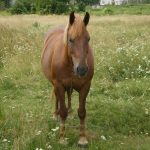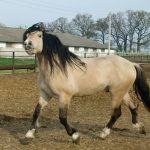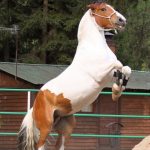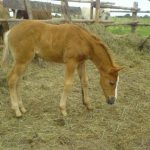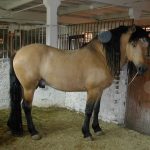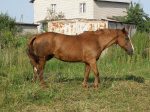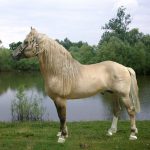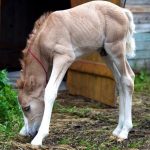Byelorussian Harness Horse
The Byelorussian Harness Horse is a medium- to large-size Belarusian horse with the characteristic conformation of harness horses. Though these are primarily used as a working horse, they can also be used for the production of milk and meat in Belarus. They are known for their hardworking ability and excellent temperament.
Byelorussian Harness Horse Pictures
- Belorusskaya Horse
- Byelorussian Harness Horse Images
- Byelorussian Harness Horse Mare
- Byelorussian Harness Horse Pictures
- Byelorussian Harness Horse Stallion
- Byelorussian Harness Horse
- Byelorussian Horse
- Byelorussian Harness Horse Foal
Quick Information
| Other Names | White Russian Carriage Horse, Belorusskaya Horse, Byelorussian Horse |
| Behavioral Characteristics | Noble, mild, adaptable, docile |
| Physical Traits | The head is not very large and has a broad forehead, well-muscled average neck and withers; the back is long but flat and dippedslightly with a short, flat loin and a wide, rounded croup; the chest is deep and broad while the limbs are sturdy and clean; their fetlock tufts are small but the tail and mane are dense |
| Coat Colors | Usually bay, light bay, dun, and chestnut, but also red and black |
| Height/Size | 14.7 – 15.5 hands (adult) |
| Weight | Average to heavy; Stallions: 600-700 kg; Mares: 490-600 kg |
| Common Uses | Riding, carriage pulling, light agriculture work, meat and milk production |
| Health Problems | Generally healthy |
| Type | Working Horse, Riding Horse |
| Blood Type | Warm |
| Ancestors (Bloodlines) | Brabant, Dole, Ardennes horses |
| Popular Traits | Willing, easy to handle |
| Feeding/Diet | General horse diet including hay, grass, grains, etc. |
| Country of Origin | Belarus |
Video: Byelorussian Horse
History and Development
The Byelorussian Horse was developed in the region of Byelorussia (now in Russia) in the second half of the 19th century by breeding the local forest horses with the Brabant, the Dole, and the Ardennes breeds, (with the Norwegian Dole horses having the strongest impact).
The aim of developing these horses was to create a harness horse breed. The result was a success, and over time, the horse proved to be very suitable for agricultural work mainly in forest areas having both sandy and swampy types of soil.
There are two variations within the breed, the large and the medium. Presently, the primary breeding centers of these horses are the Zarechye and Pobeda state farm studs located in Byelorussian. As of 1 January 1980, the population of these equines numbered 93,040, which included 27,560 purebreds.
Interesting Facts
- The maximum load capacity of this breed is as high as 660 kg.
- At the established koumiss (alcoholic beverage made from fermented horse milk) farms in Belarus, the best mares can yield about 2560 liters of milk in a 6-month lactation period, with an average production of 9 liters of milk daily.


